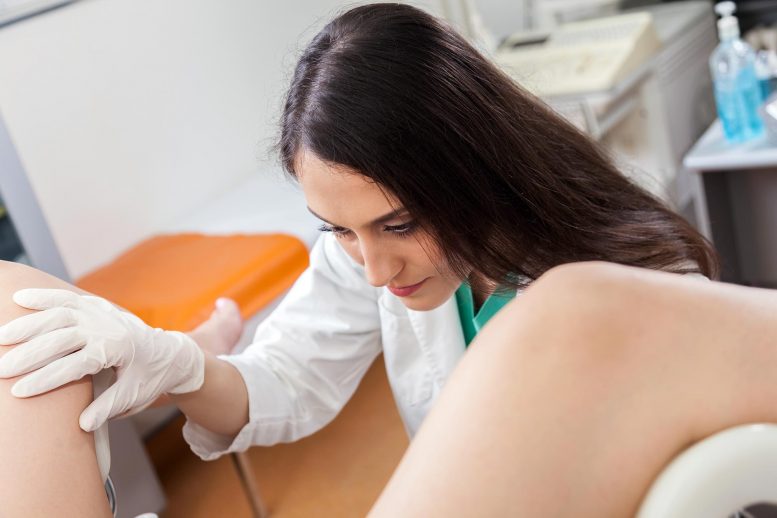Study Shows Millions Of Young Females Getting Unnecessary Outdated Pelvic Exams
Source: Thailand Medical News Jan 12, 2020 5 years, 3 months, 2 weeks, 22 hours, 2 minutes ago
Despite the fact that
pelvic examinations and
cervical cancer screenings are no longer recommended for most
females under age 21 during routine health visits, a new study has found that millions of
young women are unnecessarily undergoing the tests, which can lead to false-positive testing, over-treatment, anxiety, and needless cost.

Medical researchers at University of California San Francisco and the Centers for Disease Control and Prevention (CDC) estimated that 1.4 million
pelvic examinations and 1.6 million
Pap tests performed on U.S.
females 15 to 20 years old in a single year may have been medically unnecessary. Globally the figures is estimated to be around 21
million pelvic examinations and 26 million
Pap tests on this age group.
The study findings suggest that despite professional guidelines and recommendations against routine
pelvic examinations and
Pap tests in this age group, there’s a critical lag in clinical practice. The estimated cost of these unnecessary exams was approximately $123 million a year.
The research study was published on January 6, 2020 in
JAMA Internal Medicine.
Senior author George F. Sawaya, MD, professor of Obstetrics, Gynecology and Reproductive Sciences at UCSF and director of the UCSF Center for Healthcare Value told
Thailand Medical News, “Recent media reports have called attention to inappropriate gynecologic examinations in
young women. Parents of adolescents and
young women should be aware that
cervical cancer screening is not recommended routinely in this age group. Pelvic exams are not necessary prior to getting most contraceptives and are often not needed to screen for sexually transmissible infections.”
Normally,
cervical cancer screening is not recommended for individuals under age 21, according to the U.S. Preventive Services Task Force, the American College of Obstetricians and Gynecologists, and the American Cancer Society. Additionally, leading professional organizations recommend against performing
pelvic examinations in asymptomatic
women who are not pregnant.
The study analysis was intended to estimate how often
pelvic examinations and
Pap tests occurred among
young women in the U.S., as well as the proportion that were potentially unnecessary. The population-based study used data from 2011 to 2017.
Medical researchers classified the
pelvic examination into two types: medically indicated or potentially unnecessary.
Pelvic examinations were considered medically indicated if performed during pregnancy or in association with use of an intrauterine device, or in the context of treatment for a sexually transmitted disease.
The researchers estimated that of approximately 2.6 million
young
> women who received a pelvic exam during the previous year, more than half (54.4 percent) were potentially unnecessary, representing an estimated 1.4 million young women.
Furthermore, the researchers found that nearly a fifth of females younger than the recommended age had a Pap test within the past year. Because 72 percent were performed as “part of a routine exam,” they were potentially unnecessary, representing an estimated 1.6 million young women. Almost all of the pelvic examinations were performed at the same time as the Pap test.
Young females who had been screened for a sexually transmitted infection were 3.8 times more likely to receive a Pap test and 60 percent more likely to receive a pelvic examination, compared with those who had not been screened.
Also, young women who used a hormonal contraception other than IUD were 75 percent more likely to receive a Pap test and 31 percent more likely to receive a pelvic examination, compared with those who did not use those contraception methods.
First author Dr Jin Qin, ScD, an epidemiologist with the Division of Cancer Prevention and Control at the Centers for Disease Control and Prevention added, “This study suggests that healthcare providers and young women need to communicate clearly and often about the best time for these tests,” “We want to ensure that guidelines are followed, and lives are saved.”
Reference: “Prevalence of Potentially Unnecessary Bimanual Pelvic Examinations and Papanicolaou Tests Among Adolescent Girls and Young Women Aged 15-20 Years in the United States” by Jin Qin, ScD; Mona Saraiya, MD, MPH; Gladys Martinez, PhD and George F. Sawaya, MD, 6 January 2020, JAMA Internal Medicine.
DOI: 10.1001/jamainternmed.2019.5727
